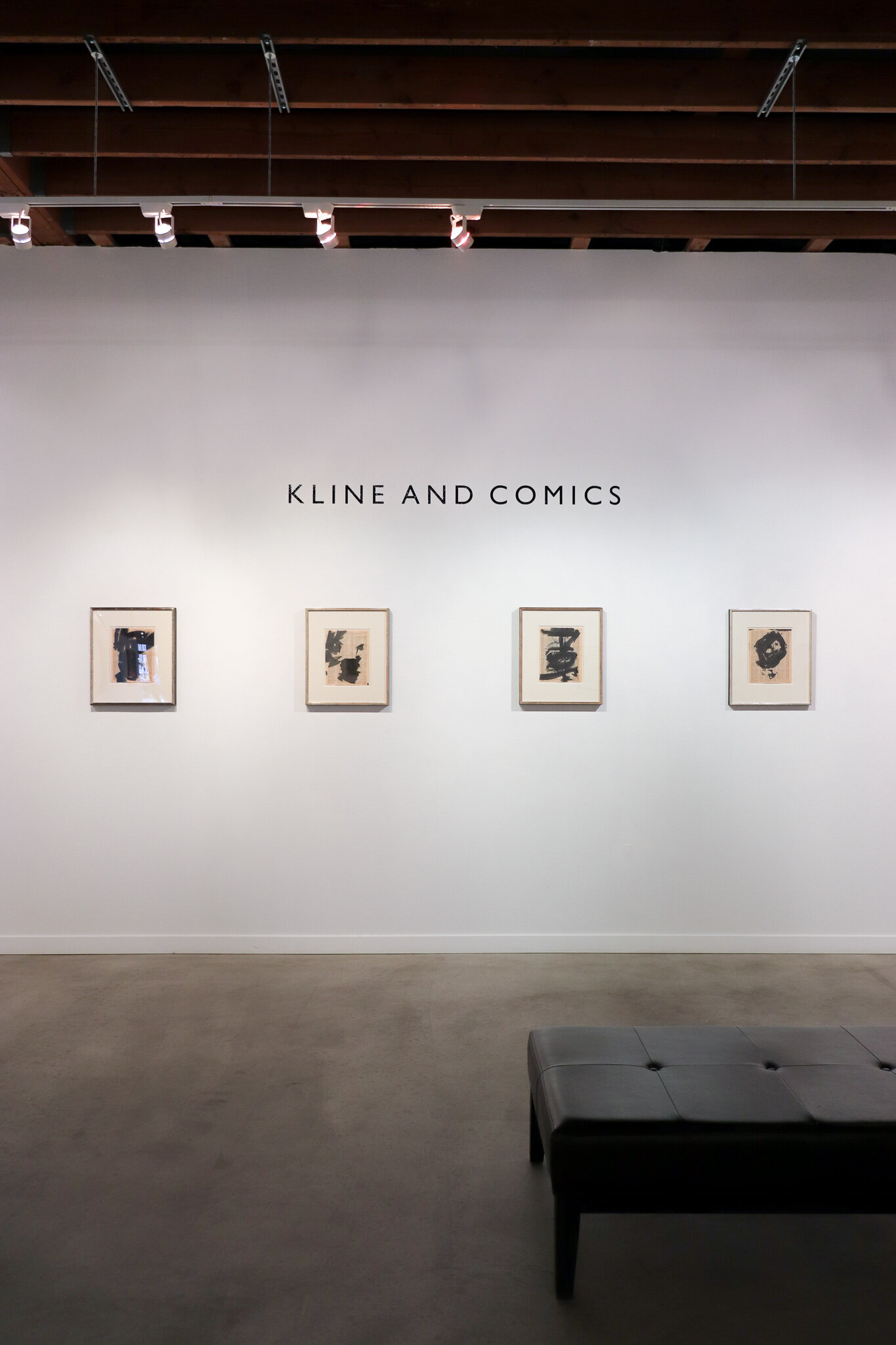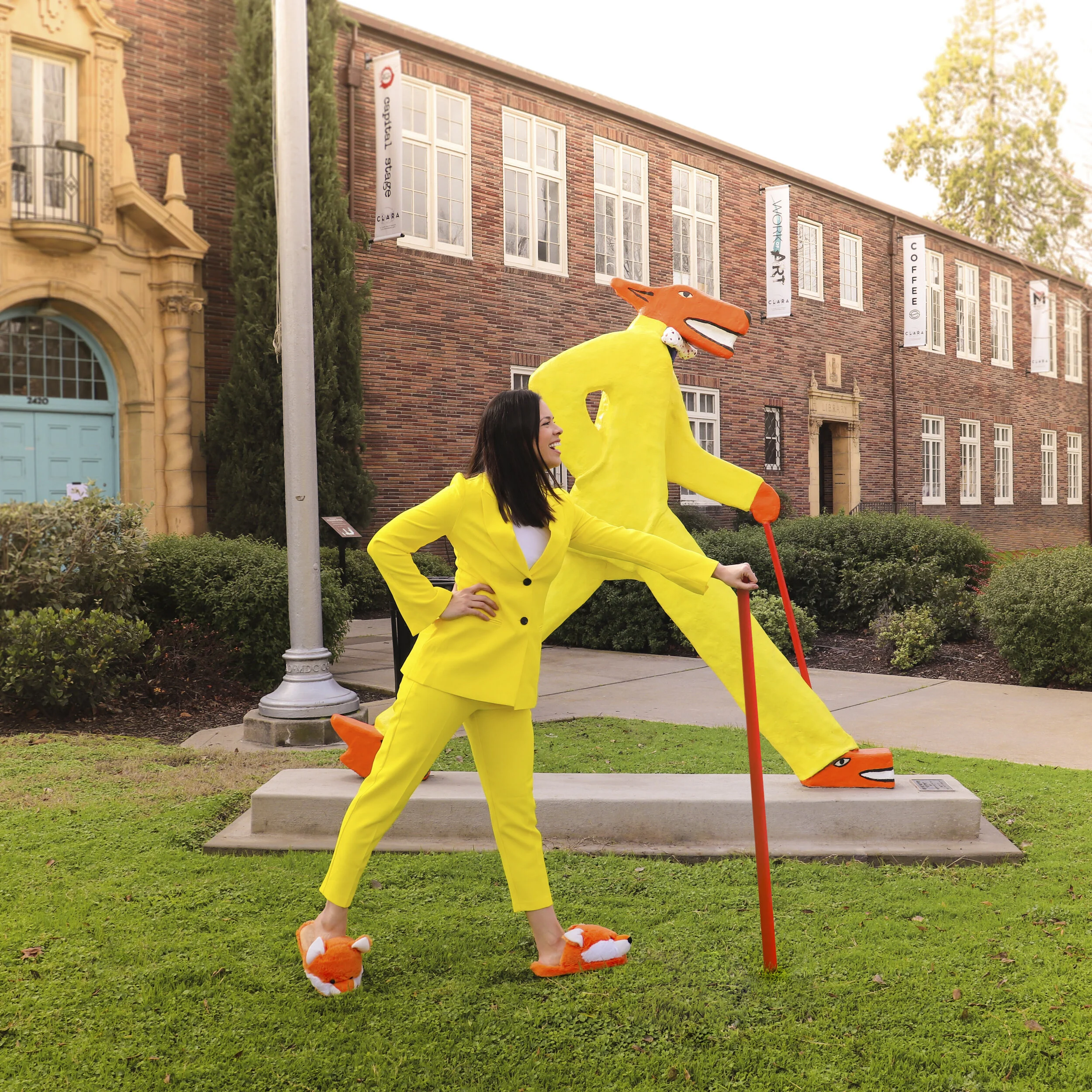Franz Kline
This January 2020, I have the unprecedented honor of showing work from the personal collection of Wayne Thiebaud in an exhibition at Elliott Fouts Gallery called Kline and Comics, which pairs Franz Kline's phonebook page paintings alongside an assortment of comics from various cartoonists Thiebaud has collected over the years. The exhibition is curated by the Wayne Thiebaud Foundation.
The following describes how Thiebaud came into the possession of the Kline sketches:
In 1956 while studying and working in Manhattan, I met many of the artists then working under the critical term as Abstract Expressionists. I attended the well known Cedar Tavern and meetings at what was known as “The Club.”
These ink on New York City telephone book pages were made and used by Kline as preliminary ideas and sketches. According to Willem de Kooning, he suggested to Kline to “blow-up” (or enlarge) the most interesting ones and make large paintings on canvas.
It was my privilege to visit Franz Kline’s studio and to witness great numbers of these studies lying on the floor. We discussed teaching when I informed him that I was on leave as a teacher from Sacramento Junior College (now). He informed me that in his opinion “teaching is a moral sin.” He said it in a pleasant way but reflected his concern about what university and college art classes were doing. After some time and a few drinks, we agreed how difficult it is to teach art students in a seriously committed way. At that point while discussing his present method, I mentioned how useful it would be for serious painting students to see how he used these sketches. He volunteered to let me “pick out a batch of his abandoned ones to show them.” He did say, “They are only for this single use and should not be considered serious finished works in any way.” I promised to never sell or compromise them in any way.
Eventually as Kline became internationally well known, his sketches of this kind became rather rare, and he did sign and authenticate some of the. These remain unsigned and are not for sale.
Wayne Thiebaud, August 6, 2007
These bold zen-like black and white abstractions are paired alongside the “daily” of comics whose simplification of physiognomic types in emblematic settings continue the grand tradition of picture-making. Together, the collections provide a unique comparison between fine art and commercial art.
“If you haven’t seen yourself as a character in a cartoon you have not had a good look at yourself”W.C. Fields (Major Hoopie)
Cartoons allow the silly to sit with the sublime and humor makes a good life possible. One wonders why we don’t have a good deal more of it. Since our days in the caves we’ve developed language, laws, manners, science, and art. But we did not develop a sense of humor. It has always been with us like breathing, eating and making love. Humor and sex are interesting bedfellows. The world watches over these with matchless worry and control. And even the religious we invited for humanitarian purpose has trouble with a sense of humor. (Although God knows we need it!).
Ideologies of the left or the right are based upon impressive logic and rational imperatives. Humor is irrational, intuitive and represents the radical wing of the intellectual world. This special revolutionary characteristic of wit and humor is always capable of undermining any fixed idea. As a result even our thinking of the world is full of “comicphobics.” The unique aspect of a free and open society of enlightened individualism is its openness to all kinds of ideas. Cartoons are a very different way of knowing things and are able to combine the outrageous, ridiculous and frivolous with a kind of rude truth. Powerful psychological enterprises are played out by the innocent smart-aleck whose charades remind us how vulnerable we are. We are thereby admonished that our finest hopes depend upon our capacity to have feelings for others. This kind of graphic power gives us a fresh look at ourselves and reminds us how complicated we are in a simple way.
Cartoonists wisely ignore the big question of what life is in order to show us how life is. Comic beings live our lives in rectangles, circles, boxes and strips. These tiny geometric worlds of absurd dramas are able to anthologize our personality and character with atavistic memory. Our multi-sided self is naked and we are exposed; what we are, what we have been, what we might be, all of our pretenses, follies and dreams. Witness how those big-nosed, rubber-mouthed, moon-eyed kings and tramps, fools and geniuses, heroes and clowns bulging and banging away at life touch our hearts and bring us to laughter and tears. Here is a kind of revolutionary empathy calculated to remind us of how funny we all are and that humor may be our saving grace.
These thoughts are based upon ideas that came out of discussions of cartoons with Philip Guston, Gordon Cook, Willem de Kooning, Elmer Bischoff and other painters who share a love and admiration for cartoon art.
Wayne Thiebaud, Summer 1988
Here’s some more information about the exhibition in an article published by The Sacramento Bee on January 7th, 2020:
The Wayne Thiebaud Foundation is collaborating with the Elliot Fouts Gallery to showcase works collected by Thiebaud, which include comic strips and a series of paintings from Franz Kline.
The Kline and Comics collection includes comic sketches crafted and collected by Thiebaud, as well as a series of phone book page paintings Thiebaud procured from Kline during a trip to his studio in 1956. The collection was curated by the Wayne Thiebaud Foundation, which is run by Thiebaud’s stepson, Matt Bult.
According to the director of the Elliot Fouts Gallery, Michelle O’Brien, it is the P Street gallery’s first noncommercial exhibit. O’Brien said the pieces were gifted to Thiebaud under the premise he would not resell them and use them as a means to instruct students.
O’Brien said she got a firsthand glimpse into Thiebaud’s academic career when she attended his last class at UC Davis. Thiebaud reminisced on his acquisition of the works in August of 2007, during which the two painters shared their thoughts on the difficulties in bridging art and academics.
“After some time and a few drinks, we agreed how difficult it is to teach art students in a seriously committed way. At that point while discussing his present method, I mentioned how important it would be for serious painting students to see how he used these sketches. He volunteered to let me ‘pick out a batch’ of his abandoned ones to show them,” Thiebaud said.
According to Bult, the partnership with the gallery allows it to serve as an annex of sorts for the foundation, which lacks the room for exhibitions. Bult said that a majority of the collection is in the medium of graphite, lead and ink.
“We thought with the black and white, the positive and negative shapes, and some of the different characteristics of abstract expressionism paired with some of the comics’ linear quality would make a good kind of comparison between fine art and commercial art,” Bult said.
A majority of the pieces are dated between the 1930s and ‘50s, and include characters such as Disney’s Goofy and the New York Evening Journal’s Krazy Kat, which Bult says offer insight into the beginnings of Thiebaud’s taste and education as an artist.
“They’re things he’s collected, people he’s been familiar with since high school. He used to enter comic competitions in magazines and send out his comics out to different magazine to try and get a little money, to get $1 or $5,” Bult said. “He did work for Disney for a while. He was a sign painter, so he does have a lot of graphic art and illustration background. He never did have the fine art school background. Something he just kind of took on his own. His schooling had more of a draftsman quality than a painter.”
The collection also houses several of Thiebaud’s sketches of Kline, which Bult says may mislead some about the nature of the personal relationship between the abstract expressionist and pop art painter.
“He’d probably only seen him a couple times. He used to go to that Cedar Bar, where a lot of guys like Pollack, Kline and de Kooning hung out. I think he kind of sat in the background and watched that and did a couple little sketches of Kline,” Bult said. “Kline himself was a cartoonist. He would do caricatures of people in the bar, and he would trade those to the bartender for his tab.”
The collection is available for viewing at the Elliot Fouts Gallery until Jan. 30, with a second Saturday reception slated for Jan. 11 from 6-9 p.m.











